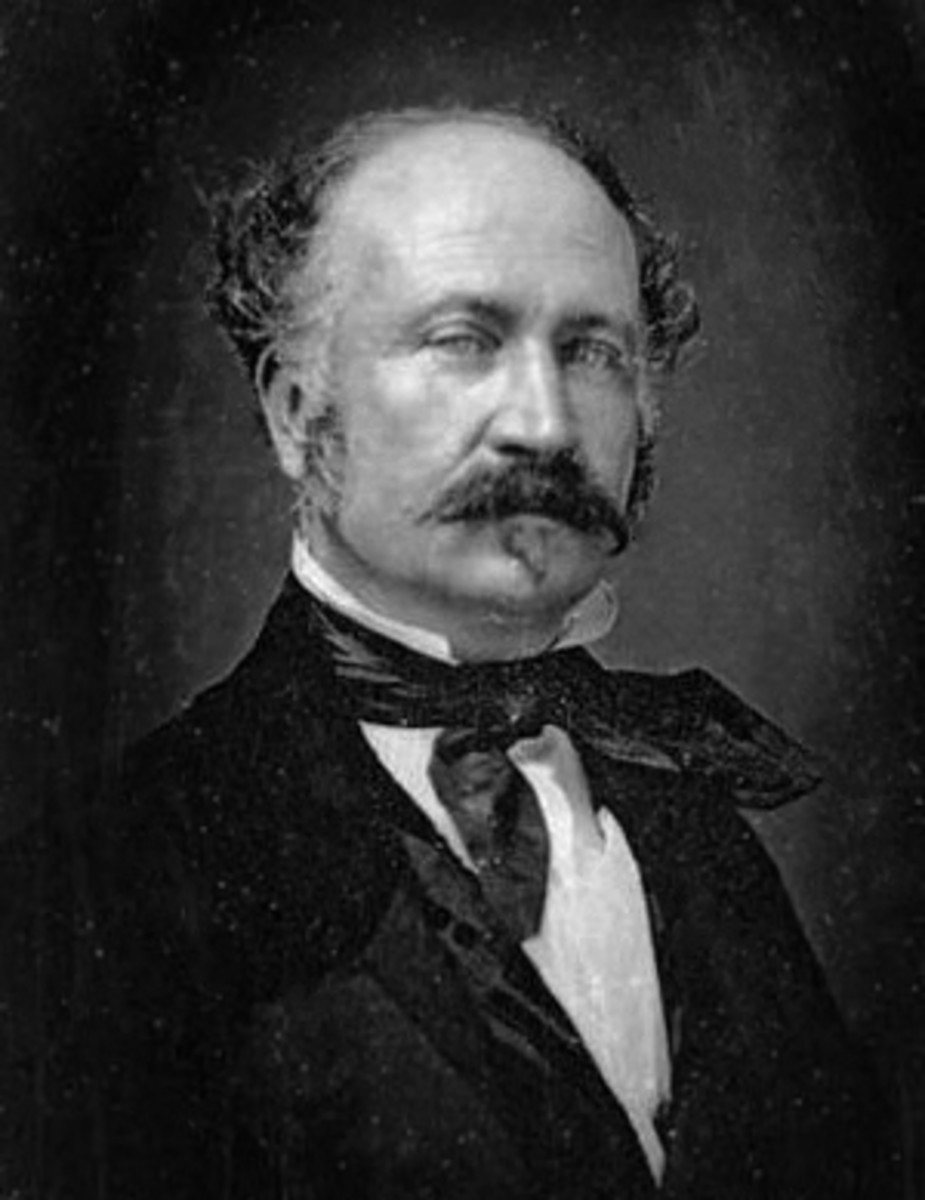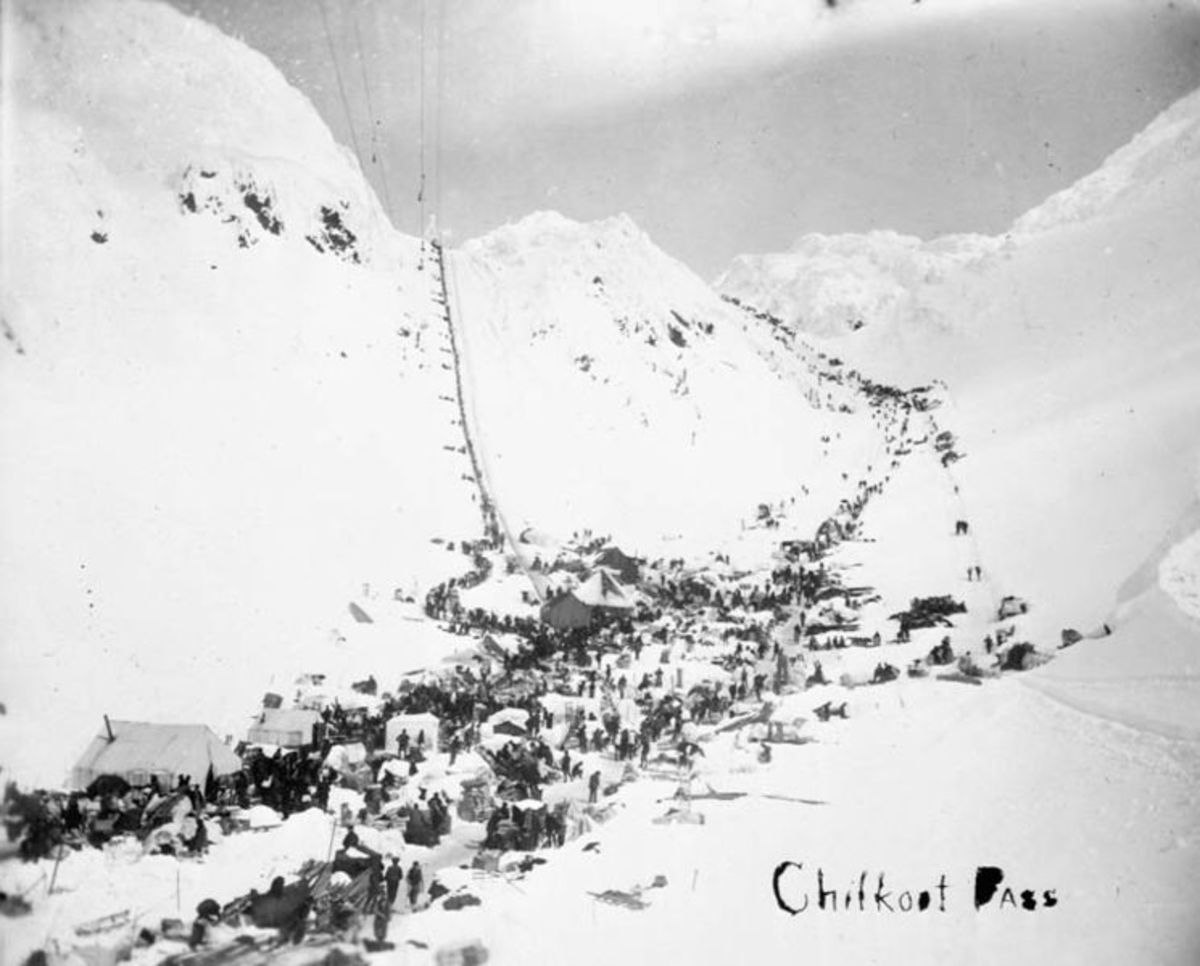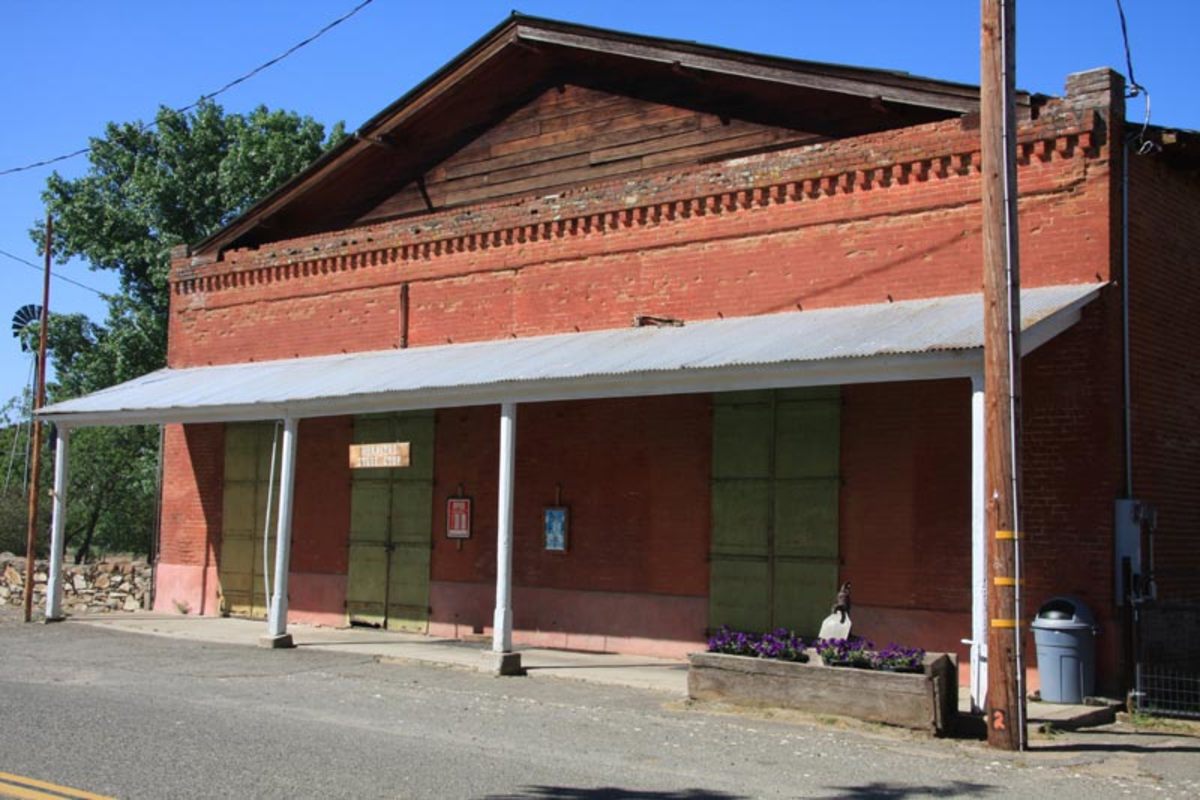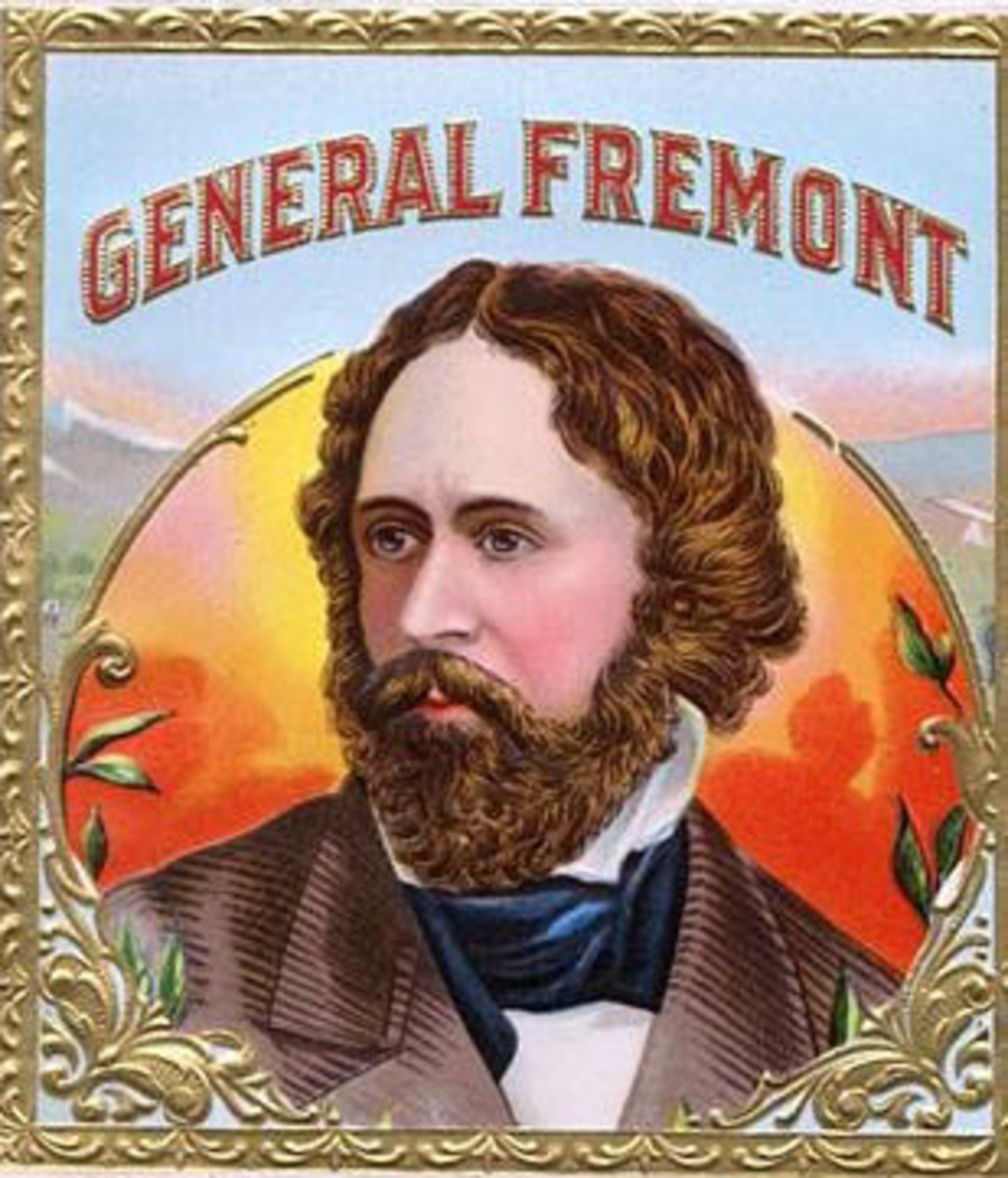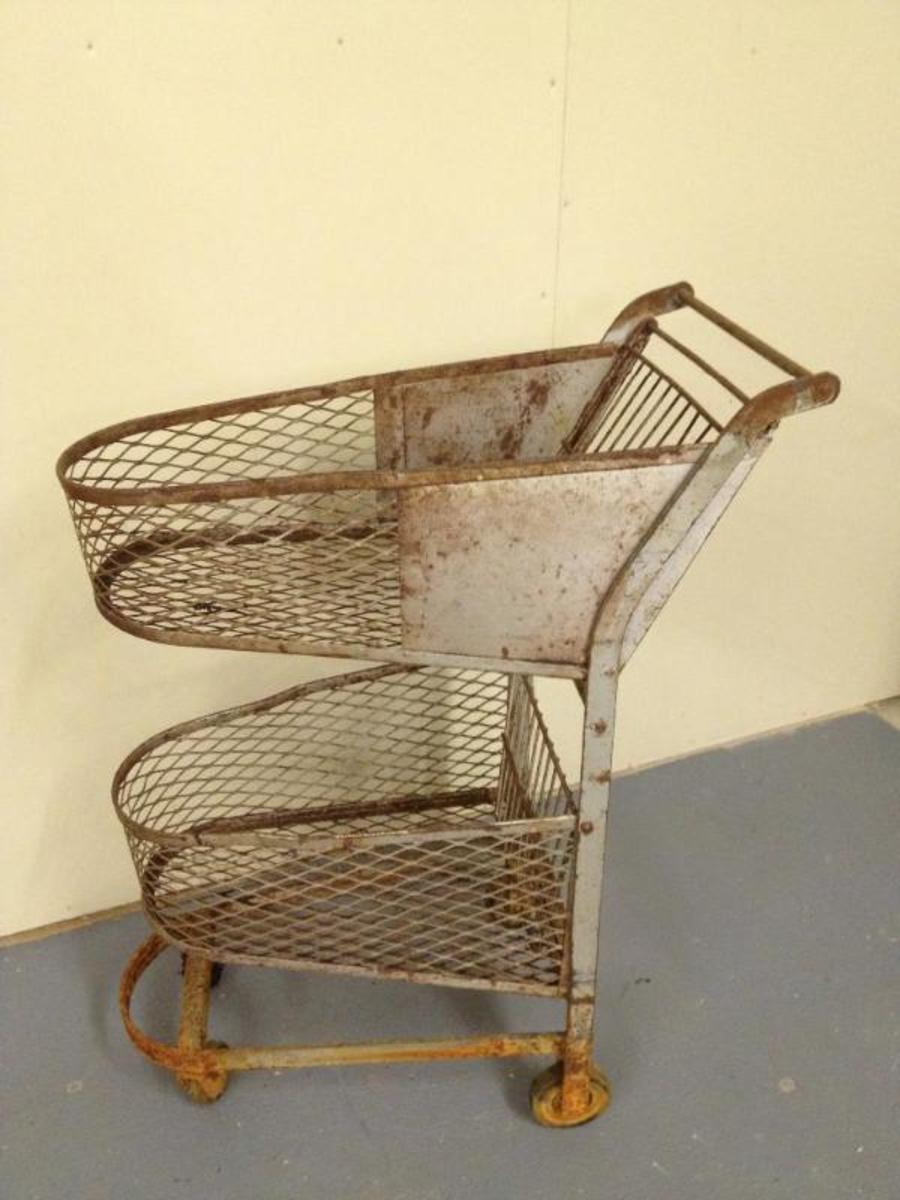Sonora, California
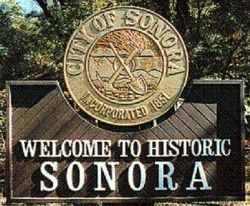
Sonora, California - "Queen of the Southern Mines"
I'm Nara White Owl and I live in a small town with a lot of history. Here in Sonora, California a great deal of old history and new history being made.
Living in a small town is very peaceful and we do not have big shopping, but we have some great stores. After living in Southern California I have to tell you it is great to live in a small town like Sonora.
When you are in California take a trip to Sonora and get away for a weekend. We have a lot to do and place to see. I made this lens to show some of the history of Sonora, but I'll add more each week on the life in Sonora, I hope you can check in from time to time to see My Town - Sonora, Ca.
Sonora is a small historic town in California. You can't do better than a visit to one of the charming towns along Highway 49, deep in the Sierra foothills.
The town of Sonora perhaps is one of the most scenic towns in the area. Sonora has a long main street of western storefronts with plenty of nearby historic homes. Also not to mention a couple of spectacular church steeples that makes it great for taking pictures. Sonora is chock-full of antique shops, as well as small, but interesting shops and restaurants.
The hills and vegetation in this part of California offer great relief from the monotony of the San Joaquin Valley just a few miles to the west. The country roads are crooked, all right - and Highway 49 probably is the worst offender here - but the trees, streams, meadows and frequent vistas are a treat for anyone who loves to travel scenic byways.
Tuolumne County - This Video Was Taken In Tuolumne County
In this video are some of the cities in Tuolumne County. The train is from the town of Jamestown at Railtown.
The western town is the main street in Columbia, California.
You are going to see part of Sonora and the open land all around the county. The lake is New Melones a great recreation place for boating and fishing.
In the Tuolumne County we have beautiful small towns and lakes.
Sonora has a lot to do for everyone shopping in the small stores to hiking and we have some of the most beautiful water falls.
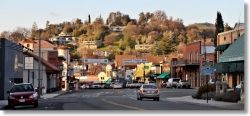
Sonora Chamber of Commerce
Planning a Trip To Sonora
Make sure to stop in at the Chamber of Commerce and check out what is going on in and around Sonora. In my small town we have something going on most of the time. We have bird watching groups and some museums and live theater.
Most fun I feel is just to walk around town and see all the old building and ask about the history of some.We have a few downtown that when you go in you can see the mine that was under the store.
Our city also plays host to numerous festivals and special events throughout the year.
Just outside the City limits are year-round outdoor recreational opportunities at resorts, campgrounds, lakes, golf courses and high country waterways.
Sonora is an easy drive from the San Francisco Bay Area or the Central Valley. State Highways 108 and 49 pass through the City, which, incidentally, is just seventy miles north of Yosemite National Park.
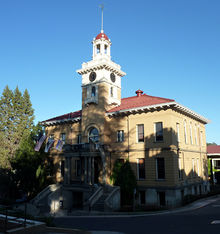
Sonora, California
Tuolummne Country
Sonora is the county seat of Tuolumne County, California.
Sonora is the only incorporated community in Tuolumne County,
Founded by Mexican miners-reminiscent of the state of Sonora, Mexico-during the California Gold Rush, Sonora was once a booming center of industry and trade in California's Mother Lode. Most of the gold that was removable with traditional mining techniques was quickly extracted, leaving miners to use more complex and expensive mining techniques to reach deep pockets of quartz and gold. Sonora as well as other mining towns of the era experienced economic hardship when the value of gold decreased. As easier accessible gold deposits dried up, businesses and miners realized extracting the gold cost more than it was worth. As "gold fever" died down, Sonora's size and population steadily decreased over the years.
Sonora, Ca.
Small town of Sonora, Ca.
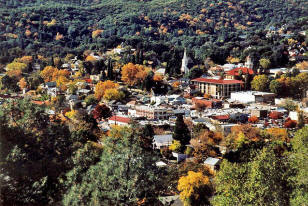
History of Sonora
Modern History Of Sonora
Here is just some of the history of the small town Sonora, Ca.
Sonora's modern history began in 1848 with the discovery of gold in the South Fork of the American River.
The first miners in the area known as the Sonoranians were often veterans of the Mexican - American War (1846-1848) as well as miners from the Mexican state of Sonora.
The Sonoranians were skilled at finding placer gold deposits, which made their camps an inviting target for American miners who considered California their territory after the recently won Mexican-American War.
One such Sonoranian camp, called the Sonoran Camp, was located on Wood's Creek at the site of present day Sonora High School.
Although the Sonoranians tried to keep the camp's location a secret, local miners soon discovered not only the Sonoran Camp but also other mining holds along a nearby branch of Woods Creek (later named Sonora Creek).
The gold miners that arrived from across the United States established a camp known as Scott Town, which was located in the area of present-day of Coffill Park.
The two camps, Sonoran and Scott Town, defined the boundaries of what would become the City of Sonora, and the area was soon populated with gold seekers and merchants who supplied goods and services to the new population.
During the 1860s and 1870s Sonora had its own Chinatown with about 400 Chinese residents. Chinese stores were built side by side along the entire block between Stewart, Shepherd, Bradford and Lyons streets. Narrow alleys went between the stores to the rear of the buildings where there were small rooms used for living quarters.
Only a small monument on Stewart Street commemorates what was once Chinatown and only a few people today remember the once active community.
Tuolumne County was established as one of California's original 27 counties on February 18, 1850, with Sonora as the County Seat. Sonora remains the County Seat and is the only incorporated city in the County.
Because Sonora's downtown has changed very little from its beginnings, including its narrow streets and many historic buildings, it draws people from all over the world who want to experience the ambiance and charm associated with an earlier day.
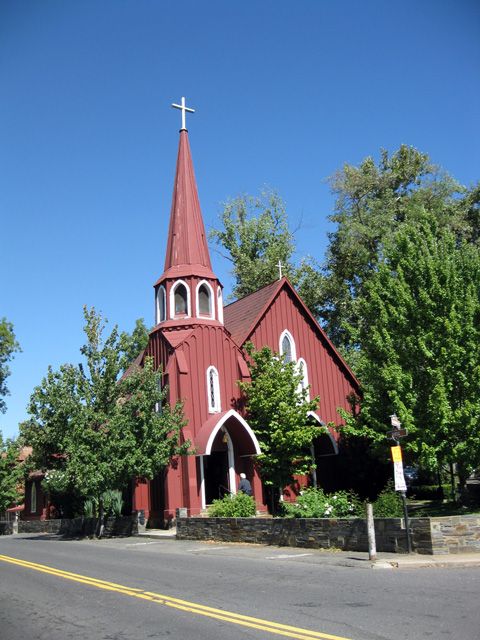
The Red Church
The Most Painted Church In Sonora
The Red Church is one church that people just have to have a photo of when making a trip to Sonora.
St. James Anglican Church, also known as the Red Church, was built 1860 in Sonora California during the post-Gold Rush era. Its eight-sided steeple is an example of the Swedish architectural style. Rev. John Gassman, a Norwegian native, helped design the building and was the first pastor.
The red painted board and batten exterior walls are made from California redwood. In 1868 a part of the church had to be rebuilt after a fire destroyed the steeple and the west side of the building.
The church was consecrated in 1870 by the Rev. William Ingraham Kip, first bishop of the Episcopal Diocese of California. Reportedly the seventh Episcopal parish as well as the oldest Episcopal church building in California, it has been designated California Historical Landmark No. 139.
In recent years, we learned a bit more about its history. It would appear that the ground behind the main chapel is sinking. Engineers were brought in to see what was wrong. Turns out there is a huge abandoned gold mine directly underneath. Actually, much of Sonora is built above abandoned gold mines. Some of those mine shafts, historians say, were useful during the city's wilder times. Gamblers & bootleggers alike could make a hasty retreat when sought after by the law.
Highlight's In The Town Of Sonora - Just Some Of The Fun Here In Sonora
In Sonora we always having something going on. Lots of Parades for the people that live in Sonora if there is a holiday then lets have a parade and party.
Here are just a few of the ones we have each year and we all look forward to the good time.
The first video is from UPS 31 news. The Highway 49 is also named Washington St. each parade goes down this street,
The second video is the start of the year with Celtic Faire in March. March 9,10, 11,2012
The third video is of The Mother Lode Round-Up in May.
The fourth video In the spring when we have Magic of the Night .
The fifth video is In the fall we have Homecoming Parade for Sonora High and then the big football games.Friday, October 12: vs Manteca (Homecoming)
The sixth video is the way Sonora ends the year with the Sonora Christmas Parade.
Yes, Sonora is a small town but, we have fun
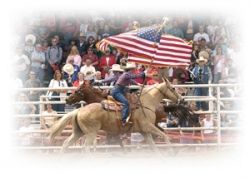
The 56th Mother Lode Round-Up
May 11 and 12 2013
This 2013 Mother's Day weekend marks the 56th anniversary of the Mother Lode Round-up and the 66th anniversary of the Tuolumne County Sheriff's Posse, founded in 1948, who started presenting the Mother Lode Round-Up in 1958.
The rodeo and parade was established as a rewarding partnership between the Tuolumne County business community and the Posse and continues to be based on that partnership today.
Because of the generous support of the local business community, local government and law enforcement entities, and the hard work of the posse men and their families, and many volunteers, the Round-up continues to be one of the finest rodeos and celebrations in California.
Every year over 350 of pro rodeo's finest cowboys and cowgirls are attracted to this rodeo, which is now part of the PRCA Heartland Rodeo Series which celebrates small town rodeos throughout America. Saturday's parade is recognized as one of the largest parades for entries in California. Thousands of visitors are drawn every year to the Round-up weekend.
The Mother Lode Round-Up is a traditional western family, and hometown reunion that celebrates and pays tribute to the regional agricultural heritage and the Possemen in our past that kept this special event alive.
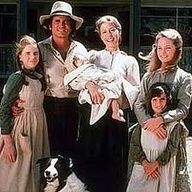
Movies Made In Tuolumne County
Sonora was used for the open land
Sonora has done pretty well for itself. Once upon a time it was known as the Queen of the Southern Mines. Later it became the movie capital of the entire Gold Country. Now it's a desirable place for retirees and many others to put down roots. Sonora, and much of the western slope.
Old Sonora can still be imagined today . It's possible to imagine gun-toting gold seekers and glamorous celebrities such as Gary Cooper and Grace Kelly sauntering along the narrow streets.
Of the nearly 300 films, features, and television episodes filmed in Tuolumne County, most are westerns. Here are some with scenes filmed in Sonora and Columbia, California.
The Best Bad Man - 1925
Hopalong Cassidy - 1935
Wells Fargo - 1936
The Lone Ranger - 1949
Rawhide -1959
Bonanza -1959
Little House On The Prairie - 1974
Back To The Future Part lll - 1990
Honky Tonk Man - 1982
Highway to Heaven - 1984
Pale Rider - 1985
Blood Red - 1989
Western Movies - Here In Amazon You Can Fine Good Movies
I picked some of the western movies made in Sonora, California
Have some fun looking around for some of you famous movies.
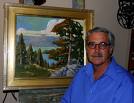
Famous People Associated With Sonora
Sonora Has A Long List Of Famous People
Sonora has always had a few famous people from here or that life here.
Jack Cassinetto was born in 1944; Sonora, California is a prolific California plein air artist of the tonal ism movement, painting primarily Northern California landscapes such as Lake Tahoe, Yosemite, the Gold Country, the Northern California Coast, and the American River and Sacramento River - Painter.
Vaughn Dale Armstrong was born July 7, 1950 in Sonora, California is an actor. He was been in Star Trek The Next Generation.
Melvin Mouron Belli was born in July 29, 1907 in Sonora, California and is a prominent United States lawyer known as "The King of Torts" and by detractors as 'Melvin Bellicose'. He had many celebrity clients, including Zsa Zsa Gabor, Errol Flynn, Chuck Berry, Muhammad Ali, Sirhan Sirhan, Jim Bakker, the Rolling Stones, and Tammy Faye Bakker, Martha Mitchell, Lana Turner, Tony Curtis - attorney.
Charles August Albert Dellschau worked was in large part a record of the activities of the Sonora Aero Club, of which he was a purported member. The club was a group of flight enthusiasts who met at Sonora, California in the mid-1800s was an American Outsider artist.
James Patrick Hogan is a United Kingdom science fiction writer with his wife a few years after 1979 moved to moved to Sonora, California.
Jenny O'Hara was born February 24, 1942 in Sonora, California and became an American actress who is part of a performing family whose influence encompasses regional and New York Theater from Warren, Pennsylvania to Greenwich Village, Broadway, and rock music from England to New York actress also numerous guest spots on series like Murphy Brown, Law & Order and ER.
Dante "Dan" Anthony Pastorini was born May 26, 1949 in Sonora, California and is a former American football quarterback in the National Football League for the Tennessee Titans, Oakland Raiders, Los Angeles Rams, Philadelphia Eagles, NFL quarterback.
Phillip Douglas Coke was born July 19, 1982, in Sonora, California and is a Major League Baseball pitcher for the New York Yankees. Coke attended San Joaquin Delta College. He was selected by the Florida Marlins in the 49th Round of the 2001 Major League Baseball Draft, but didn't sign.
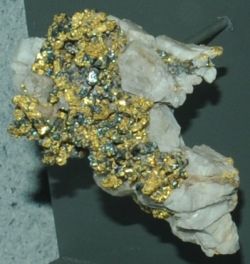
Gold Discovery in Sonora
First documented discovery was in Wood's Creek on March 17, 1849.
The rich placer deposits of the Columbia Basin-Jamestown-Sonora district were discovered in 1853. Almost all the gold was found at the base of Quaternary gravels, but some drift mines were worked in Tertiary gravels.
Total production was about 5.9 million troy ounces (183 tons) of gold.
I have found more than one date when gold was discovered in Sonora, California.
Although there was mining activity in the Sonora area in 1848 the first documented discovery was in Wood's Creek (near today's Sonora High School) on March 17. 1849. Unlike many Gold Rush towns, no specific individual is credited with the discovery of gold in Sonora.
Placer mining occurred on Dragoon Gulch as early as 1849, but not extensively until after 1852 due to the lack of water. Dragoon Gulch was named for a group of dragoons, or cavalry soldiers of the United States Army, who stayed in the area and mined for gold in the ravine. It is unknown if the soldiers were deserters from their units or on legal furlough to mine for gold.
At first there were no formalized rules governing the mining of gold. On August 11, 1854 a convention of miners formed the "Shaw's Flat Mining District", which included the upper portion of Dragoon Gulch. They adopted laws governing mining within the district boundaries. Claims were required to be rectangular in shape and were not to contain an area in excess of 100 feet square.
In May of 1848 a group of Native Americans working for Charles M. Weber discovered gold along the Stanislaus River. Then in July of 1848 the Big Bonanza Mine was created. The Big Bonanza Mine was located at what today is Washington Street, less than 100 yards from St. James Episcopal Church.
When miners found large nuggets where Sonora High School now stands, a group of gamblers tried to force them out. A few persons were killed in the ensuing gun fight, but when hundreds of angry miners from nearby mines came to help their embattled comrades, the gamblers called it quits. This mine yielded a 28 lb. nugget in 1851 and produced 990 lbs. of gold in one week in 1879. An incredible 12 tons of gold were taken from the Sonora area between early 1849 and the spring of 1850.
Benjamin Wood, James Savage and company discovered gold in Wood's Creek near Jamestown. Within two years the population of Tuolumne County had grown to nearly 20,000 people; miners searching for gold and merchants looking for a way to profit from those seeking gold.
The rich placer deposits of the Columbia Basin-Jamestown-Sonora district were discovered in 1853. Almost all the gold was found at the base of Quaternary gravels, but some drift mines were worked in Tertiary gravels. Total production was about 5.9 million troy ounces (183 tonnes) of gold.
Gold Rush In California - In Amazon You Can Fine A Lot On The Gold Rush
Below you can fine all most everything on the California gold rush.
Some of the books at about the gold rush in Sonora, California
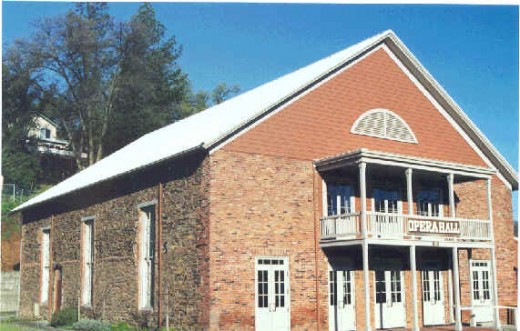
The Opera Hall
On Of The Oldest In Sonora
Today the Opera Hall is used for theater plays and meeting place for many groups we also use the Opera Hall for Wedding receptions here in Sonora.
The Opera Hall was built in 1885 and the City of Sonora acquired this "Jewel of the Mother Lode" in December of 1986.
On December 12, 1896, the headline of the Sonora Daily Union Democrat read, "Opera Hall to Go". The local newspaper was aghast, reporting "It is a source of much regret to our people to learn that the only public hall in Sonora worthy of the City's name is to be converted into a carpenter shop and forever closed as a place for giving public exhibitions. It seems a shame that the one building in the town to which our people were able to point to with pride is to be transformed into a carpenter shop". The fate of the Sonora Opera Hall was sealed that day.
Each passing year would take its toll and only time would tell what was to remain of the once magnificent building.
Built with money derived from Sonora's famed Bonanza Gold Mine, the Opera Hall began its history in 1879 as a flour mill.
The mill burned down in August of 1885 under suspicious circumstances. Immediately following the fire the building was resurrected as the Opera Hall. As Sonora's center of pride for the next 11 years, the Opera Hall hosted balls, skating parties, meetings, political rallies, plays and concerts.
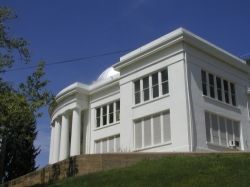
Dome School In Sonora
On Of The Most Beautiful School's
In the early 1900s, Sonora's red brick schoolhouse, built in 1858, could no longer fill the needs of the community. In May, 1907 the trustees for the Sonora School District adopted resolutions for the issuance of $50,000 worth of 5% bonds payable in 25 years at the rate of two $1,000 bonds each year. A bond election was scheduled for June 8, 1907, and construction was in full swing by March, 1909. The Architect for the construction of the Dome was Benjamin Geer McDougall and the Contractor was John Simpson and the Building Inspector John Rother. Miss M.A. Fahey was the Principal of Sonora School District and Mr. George Phillip Morgan was the County Superintendent of Schools.
The two-story Dome was originally designed for nine classrooms with a hat/cloak room in each classroom a library and an auditorium to accommodate 450 people. In the school there was a teacher's room and two playrooms for the children in the basement. Ditch water was proposed to be piped to the building for fire and drinking water with the latest improved filters installed. Originally each room had a wood stove for heating. Students were required to return from recess with a stick of wood from the wood room for the stove in their classroom.
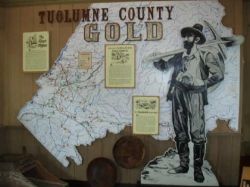
Good Old Days
By Bob Holton
158 Years Ago
Sept. 16,854
Don Pedro's Bar is the most flourishing camp at the present time in the county. The river at that place has always paid the miner uncommon rewards for his labor, and this year, it is anticipated, more gold will be extracted from its bed and banks than ever before.
103 Years Ago
Sept .3, 1903
The wooden sidewalks on Sonora are at present in bad condition, and need repairing. They reflect disgrace upon the city in the manner that they now remain. There is no excuse for them being kept in the present sat plight, for there is enough material abounding our hills to make good serviceable sidewalks.
33 Years Ago
Sept. 14, 1979
The average price of full-service premium gasoline in Sonora in now $1.1320 per gallon.
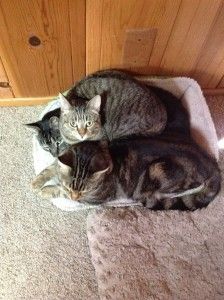
Pet Of The Week
From Country Radio In Sonora, Ca. at 93.5 KKBN
Congratulations to this week's KKBN Pet of The Week: America
’d like to nominate my pile of cats for Pet of the Week! I adopted my two big boys, Rowdy and Pancakes, three years ago. They look like little mountain lions and weigh in at 14 pounds each. We adopted our new little rescue a month ago. Hemingway is polydactyl and has extra toes on all four paws! Needless to say they’ve happily welcomed him into our home! Their human lady is Sara W in Sugar Pine.
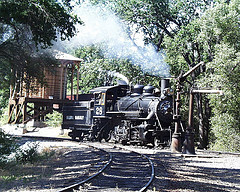
Other Towns In Tuolumne County
Jamestown
On November 10, 1897 Jamestown boomed again when the Sierra Railroad arrived. The town became the lifeline between Tuolumne County and the outside world.
Today, Railtown 1897 is a living museum as a 26-acre California State Historic Park. The original depot and a hotel were destroyed by fire, but another depot was rebuilt.
The atmosphere at Railtown 1897 complete with its roundhouse lends a certain familiarity to its many visitors. It should because Engine No. 3. Engine No. 2 and Engine No. 28 have appeared in more than 300 movies including High Noon. The Virginian, Petticoat Junction, Bonanza, Little House on the Prairie and Back to the Future III.
Owned and operated by the California State Railroad Museum part of the California Department of Parks and Recreation. Railtown's historic and famous steam engines take visitors on weekend excursions from May through Labor Day and on special events throughout the year.
Many of the historical structures of Jamestown have undergone reconstruction due to fires in 1855, 1966, and 1978. Yet, the quaint streets lined with curio and antique shops, award-winning restaurants, hotels with its resident ghosts, and saloons with that "old west" atmosphere make Historic Jamestown the ideal place to introduce the family to the heritage,charm and authenticity of this historical Sierra Nevada foothill town.
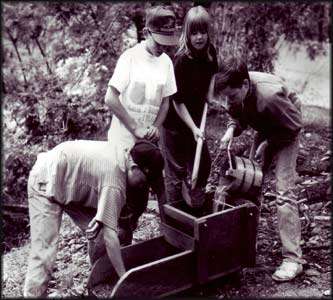
Jimtown , Ca.
1849 mining camp
History of Jimtown it was late fall 1990. It was a dry year and the grizzled, old world famous prospector was leading a group of his staff on a gold prospecting expedition. It had been a six-year drought and gold was not being replenished as it does in years of normal precipitation.
Ralph Shock took his people to the banks of Wood's Creek which has been touted as the "richest creek of its size in California". The gold they were seeking was deposited thousands of years ago. However, as they dug in the hard, dry earth; they were uncovering all kinds of items which had obviously been there for some time.
Ralph discovered an old rusted pistol that was still loaded! He found another pistol, an old knife, lanterns, a gold pan, a tin box wrapped in oilcloth and much, much more. He thought it strange to find so many artifacts in one area. His crew kept digging and found even more artifacts. They even uncovered stones which had been blackened on one side proving that campfires had been used in the area.
After Ralph discovered the foundation of an old cabin, he decided to find out some more information about this site. He spoke with Art Dubuque, owner of the property, and visited the Tuolumne County Museum in Sonora. He found that the Mi-Wok Indians had used the area before any white man. Ralph had uncovered some grinding rocks for which the Mi-Wok are famous. Jim Kirkendahl, Dubuque's son-in-law, told Ralph that Grizzly Adams had a saloon tent right there at Wood's Creek.
The area where Ralph discovered the artifacts was called Soldier's Gulch which is near Monte Carlo Gulch where a seasonal stream flows into Wood's Creek just above the bridge on Jamestown Road up Wigwam Road. (On November 1996 - at this site we found 1 brass knuckle, a pistol and 2 old dominoes) There are a great many other gold camps which have long disappeared from existence and man's minds. It is prospectors like Ralph who sometimes discover these remnants and bring them back to life.
Today you become a part of the history, whether you choose to pan for gold(keep all the gold you find!) or just watch the action. The camp has over 25 attractions, so there's something fun for everyone. But the best part is that you come away with not only wonderful memories, but a better understanding of the Gold Rush Era that played such an important role in the history of the United States ~~ with ripple effects throughout the world. Hundreds of students come to Jimtown each year.
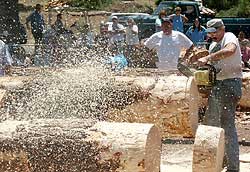
Tuolumne
Tuolumne Lumber Jubilee:60Years of History
According to the 2000 U.S. Census Tuolumne is a town located in Tuolumne County, California. At that time the town had a total population of 1,865.
For over half a century the West Side Lumber Company was the heartbeat of the little town of Tuolumne. The long arteries of train tracks twisting into the forest transported the fuel necessary for the town to thrive.
Every fallen log created work for the townspeople and nearly everyone in the town seemed to be involved with the company in some way or another. Whether they worked at the box factory, the mill, on the narrow gauge or out in the forest felling trees, the lumber company was the main source of livelihood and provided jobs to support the community for nearly sixty years.
It was a remarkable era and its legacy will never be forgotten for although the logging trains may no longer rumble into town and the lumber mill and logging camps have long been abandoned each year this fascinating time period is brought back to life through the annual Tuolumne Lumber Jubilee. Sierra Mountain Times Date for the Lumber Jubilee this year is June 10 to 13, 2010.
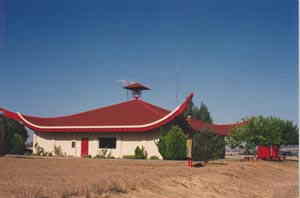
Chinese Camp
In Tuolumne County
A group of Chinese miners settled this area which turned out to have rich gold deposits. By 1856 Chinese Camp had become the hub of a large network of transportation routes.
In 1856 a disagreement among Chinese miners resulted in a battle challenge between to local tongs (secret Chinese-American societies). Almost 2,500 Chinese gathered with weapons to fight at the foot of Table Mountain and four were killed before one side retreated.
Chinese Camp is a sleepy village located at the junction of Highway 49 north and Highway 120 west. The population today is about 150 but during the gold rush it is estimated that 5,000 called it home.
The modern Chinese Camp School in keeping with the town's name and has a low red and pagoda-style roof.
In California foreign vegetation has taken over much of the open range and the Foothills. The Red Hills were set aside as an Area of Critical Environmental Concern or a "biological island" by the federal government. This area is only one mile southwest of Chinese Camp on Red Hills Road.
Visitors can see most of the Red Hills on various loop trails which total about 17.3 miles. Hiking in the Red Hills Management Area is easy on open footpaths and gentle slopes. Other activities include wildflower viewing, nature study, horseback riding, and amateur prospecting. To protect the fragile resources of the area in 1991 target shooting and off-road vehicle use were prohibited.
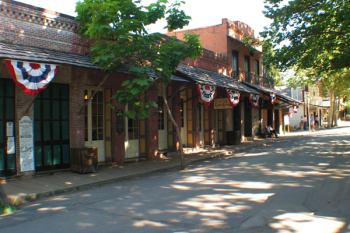
Columbia
Another Town In Tuolumne County
On March 27, 1850, Dr. Thaddeus Hildreth, with his brother George and a handful of other prospectors made camp near here. They found gold and miners streamed in to share the wealth.
The first year was almost the last for the new town. Water and indispensable for mining placer gold was in short supply. The area had no natural streams and only gulches carrying runoff from rain and snow. So in June 1851 the Tuolumne County Water Company was formed to bring water into the area.
Hydraulic mining was important at Columbia. Using monitors or nozzles to shoot water at high pressure and the miners blasted loose the gold bearing gavel and washed out the gold. This method was very destructive.
Meanwhile Columbia's tents and shanties were being replaced with more permanent structures. Streets were laid out and by the end of 1852 more than 150 stores, shops, saloons, and other enterprises were going strong.
In 1857 a second fire destroyed all the frame structures in the 13-block business district as well as several of the brick buildings. Rebuilding began immediately and the citizens decided to form a volunteer fire department.
After 1860 when the easily mined placer gold was gone the town began to decline
population dropped from a peak of perhaps six thousand to about five hundred.
During the 1920s ideas began to arise concerning the inclusion of Columbia into the new and growing California State Park System.
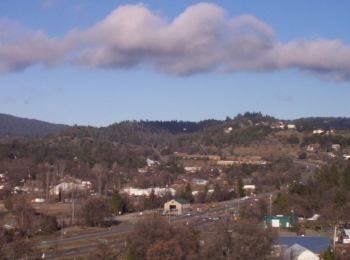
Soulsbyville
Altitude 3,000 feet
Soulsbyville is a little town east of Sonora on HWY 108. Also Soulsbyville was a mining town and it was originally founded by Ben Soulsby who owned the lumber mill. Ben's son found gold in the creek and that started a gold rush in the little town. Soulsbyville is proud of it's Victorian buildings and its accessibility to both Sonora and the upper elevation of Twain Harte.
Soulsbyville had a population of 1,729 with 725 housing units and land area of 3.04 sq. miles.
Soulsbyville Elementary School serves grades K-8 . It has received a great schools rating of 7 out of 10 based on its performance on state standardized tests. Not bad for a small town school.
It is also about 5 minutes from Black Oak Casino in Tuolumne. Sousbyville is just west of the Stanislaus National Forest and Yosemite National Park. The whole area features a myriad of recreational opportunities, nature and wildlife viewing and a number of historical attractions to experience the areas gold rush heritage.
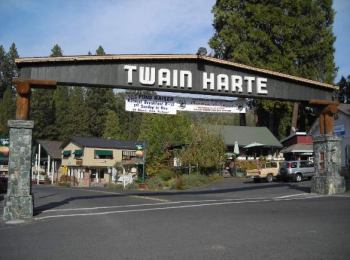
Twain Harte
The elevation is 3,648 feet
Some believe the name came from Mark Twain and Bret Harte.
Originally the Mi-Wuk lived in and around Twain Harte and they built oochums made from tree limbs and bark. They also wove fine baskets from the willows that grew in the damp place.
In nearby in Columbia, Sonora, and Jamestown, the discovery of gold in 1849 brought non-native people to the foothills by the thousands. When the easy gold was exhausted then apple and pear orchards were planted. Cattle ranches and later lumber mills began springing up around the Indian enclave at The Rock. Twain Harte Dam next to The Rock had funding problems but was finished and dedicated on July 4, 1929.
Twain Harte came into its own when a road was constructed over Sonora Pass in 1861.
Twain Harte is currently one of the fastest growing areas in Tuolumne County. Since the close of World War II when it was summer retreat of a few hundred the population has grown to 2,586.
Twain Harte has swimming, sailing, golf, tennis, horseback riding, rock climbing, fishing, skiing, skating, spelunking, biking, hiking and just hammock swinging. Also don't forget antiquing, history hunting, wine-tasting, theater or art gallery browsing. In the winter most of the time snow.
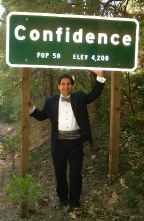
Confidence
Elevation Of 4,200 Feet With A Population Of 50
Confidence is a very small unincorporated town on State Route 108 in Tuolumne County, California.
Yes Confidence California is one of the smallest towns in Tuolumne County.
If you are taking a trip up 108 to Strawberry watch for the sign.
The sign is the place people like to stop just for that one photo that shows here is Confidence California .
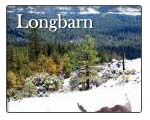
Long Barn
Elevation of 4,960 Feet and Population of 674
Long Barn got its name from a long barn built there in the gold rush days. Miners crossing Sonora Pass between Sonora and Bodie would house their animals in the barn for shelter from the cold winter. Long Barn summers are cool because of the elevation but on an average day it is 75 degrees. Winter is guaranteed snow and below freezing temperatures. The town is 40 miles East of Sonora on Highway 108 above Twain Harte .
In 1925 rancher Warren Beal built Long Barn so people driving over Sonora Pass could stop for food and lodging. Long Barn not only offers a place to stay that is rich in history, it also has the only ice skating rink in the area. Lean all about it in the Family Fun section of the recreation guide. Just down the hill is Pincrest Lake offering not only camping, picnic areas, swimming and boating but Pinecrest Theater as well. The outdoor summer only venue shows mostly children's films just after the sun goes down.
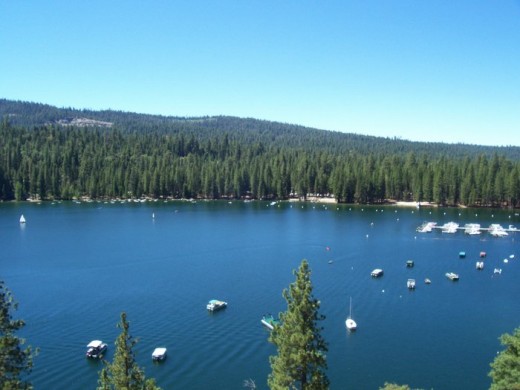
Pinecrest
Elevayion is 5,679Feet
Pinecreat is surrounded by the beautiful Stanislaus National Forest and Pinecrest is located in Tuolumne Count just off the Upper Highway 108 corridor between Pinecrest Lake is a hot spot for summer tourism, when the snow melts fishing is at its best in Pinecrest Lake and nearby streams. There are two championship tennis courts for tennis fans. Hikers can take in all that lush spring scenery coming to life. Summer brings the water sports. Swim in the warm waters of Pinecrest Lake or sunbathe on the sandy beaches. Rent a party boat, paddle boat or a small outboard motorboat. Also available to the adventuresome are single and double kayaks. Just don't forget your camera! Hike on the back trails of the Sierras. At night, see a movie under the stars in the amphitheatre. Labor Day begins the quiet months of autumn before the snow falls. The forest blazes with colors around you while you enjoy fishing, hunting, or simply strolling along. Or, just if, your preference is relaxing during these seasons, if you long for that good book or a quiet snooze in the exhilarating fresh mountain air, Pinecrest is that really special place for you.
On premises is the Pinecrest Lake Resort Center. This center is home to The Steam Donkey Restaurant, Pinecrest Sport Shop, Post Office and Pinecrest General Store. These facilities are open year round.
Winter means snow. There are snow play areas and designated cross country ski trails in Pinecrest. Pinecrest Lake Resort's lodging facilities are only four miles from Dodge Ridge, a major ski resort. Dodge Ridge offers many learn to ski packages, designed for different ability levels. Perfect for the child in all of us.
Photo by Zia M.
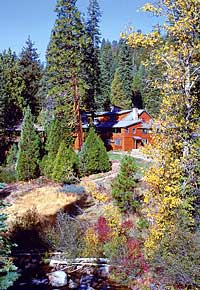
Strawberry
elevation: 5100' And Population: 130
Small mountain community with Dodge Ridge Ski Resort nearby plus Pinecrest Lake, Beardsley Lake and the Stanislaus River. Excellent backpacking & camping all over this region. Emigrant Wilderness on one side of the highway and Carson Iceberg on the other.
A small mountain community surrounded by the Stanislaus National Forest, Strawberry is located up in Tuolumne County's High Country off of Highway 108. With Pinecrest Lake and Beardsley Lake.Also Dodge Ridge Ski Resort is nearby . The area offers a host of outdoor adventures including hiking, biking, horse riding, snow sports, water sports, birding and wildlife watching, camping and fishing. Local lodgings include cabin and vacation rentals..
Nearby Pinecrest Lake is cradled in what was once a meadow it is surrounded by granite outcroppings. Emigrants called the area Strawberry Flat because of the wild strawberries that grew there. The campground adjacent to the lake is under the white fir, cedar, and sugar pine trees.
If you are looking for a place to just get away try Strawberry. One of the best places to stay is the
Outside My World Of Sonora, California - My other lenses on squidoo you might find of interest
Here you will see some of my other interests, that I have created squidoo lenses about.
- What Is Crystal Therapy
What is crystal Therapy and How can it benefit you? I am a Master Instructor Crystal Awareness Institute. I have worked with crystals most of my life. After taking my Master Instructor course with the Crystal Awareness Institute I knew that teaching - Hillary Stagg
Hilary believed in and practiced lucid dreaming and developed a way of dancing with the Music in his dreams, a way of exploring and composing music in his "sleep" that became the core of his compositions. As he experimented, Hilary developed a gentle - Pine Needle Baskets
Pine needle baskets are always a surprise when done. It is really hard to explain the connection I have with these baskets. Some of it is tradition and some of it is a sense of accomplishment. I have found something that is useful and beautiful that - Energy Healing Techniques
This lens has been written and arranged to give you the fastest access to energy healing techniques. Each section discusses all the crystal healing with completes instructions for their use. Here you are going to find the 8 different energy healing t - Dowsing For Beginners
How does dowsing work? No one truly understands completely how dowsing works. I believe Moses and ancient priests clearly understood completely how it worked, but, they never told such ideas to the masses, to have done so, would have meant a loss of
I would like to thank each one for coming by and reading about a my town Sonora,California




